#Saturnalia tupiniquim
Explore tagged Tumblr posts
Text
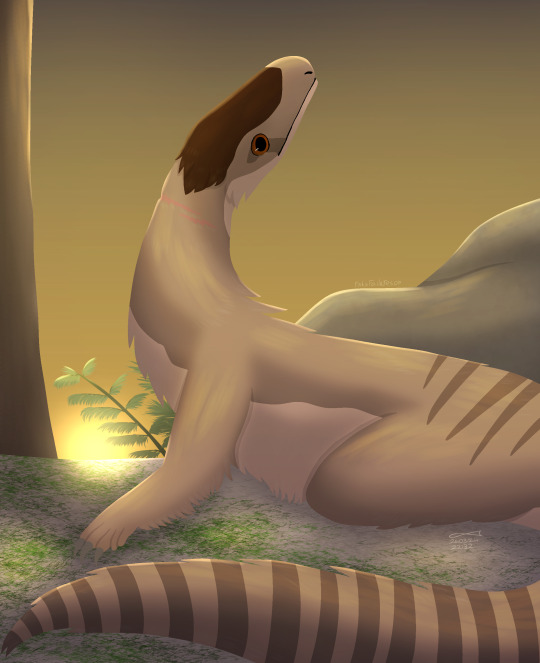
A lone Saturnalia rests in its favourite spot as the sun sets
#art#my art#digital art#paleoart#paleontology#palaeoblr#archosaurs#dinosaurs#sauropodomorphs#saturnalia tupiniquim#<- tagging the species rather than the just the genus to avoid clogging up the tag for the roman festival lmao#queue#tumblr radar
2K notes
·
View notes
Text
Archovember 2024 Day 15 - Saturnalia tupiniquim

The Late Triassic Saturnalia tupiniquim was one of the earliest dinosaurs. While around 1.5 metres (4.9 ft) long and weighing between 4 and 11 kilograms (8.8 and 24.3 lb), Saturnalia was in fact an early sauropodomorph, ancestral to the long-necked giants who would one day tower over all other dinosaurs. Unlike its descendants, it was a carnivore or omnivore, eating arthropods or small vertebrates. Its long body and neck would have allowed it to dart its head rapidly after fast, elusive prey.

Living in Brazil’s Alemoa Member of the Santa Maria Formation, Saturnalia would have lived in a coastal environment. It could have lived alongside other early archosaurs like fellow sauropodomorphs Buriolestes, Nhandumirim, and Pampadromaeus, the lagerpetids Ixalerpeton and Venetoraptor, and the silesaur Amanasaurus, as well as other archosauromorphs like the proterochampsids Cerritosaurus and Proterochampsa. It would have also lived alongside a variety of synapsids like the cynodonts Exaeretodon, Alemoatherium, Charruodon, Gomphodontosuchus, Prozostrodon, and Therioherpeton. Saturnalia could have been hunted by the pseudosuchians Rauisuchus and Dynamosuchus and the herrerasaurids Gnathovorax and Staurikosaurus.

This art may be used for educational purposes, with credit, but please contact me first for permission before using my art. I would like to know where and how it is being used. If you don’t have something to add that was not already addressed in this caption, please do not repost this art. Thank you!
#Sorry this is late#the Executive Dysfunction hit hard#Saturnalia tupiniquim#Saturnalia#sauropodomorphs#saurischians#dinosaurs#archosaurs#archosauromorphs#reptiles#Archovember#archovember2024#Dinovember#Dinovember2024#SaritaDrawsPalaeo#Late Triassic#Brazil#Santa Maria Formation
42 notes
·
View notes
Text

Archovember day 15! Saturnalia tupiniquim! A basal Sauropodomorph from the middle Triassic! I was thrown off by this animals general shape as I originally thought it was some sort of Theropod. Imagine my surprise to find out that its more related to Sauropods. It was pretty small as well, maybe the size of a medium dog.
51 notes
·
View notes
Text


Archovember day fifteen! Saturnalia Tupiniquim
a mama with her new fluffy babies :]
Archovember is by @/saritapaleo
3 notes
·
View notes
Text
Saturnalia tupiniquim

By Ripley Cook
Etymology: Named for the Roman festival of Saturn
First Described By: Langer et al., 1999
Classification: Dinosauromorpha, Dinosauriformes, Dracohors, Dinosauria, Saurischia, Eusaurischia, Sauropodomorpha, Saturnaliidae
Status: Extinct
Time and Place: 233.23 million years ago, in the Carnian of the Late Triassic

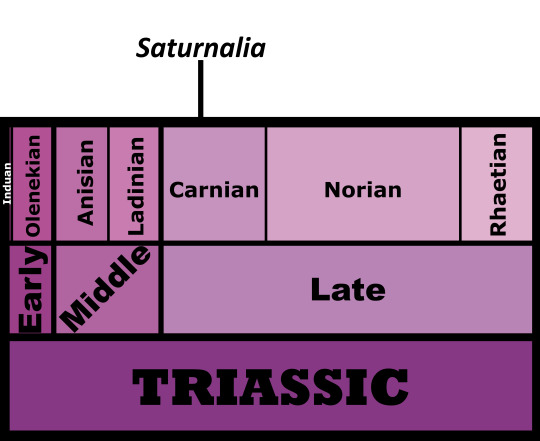
Saturnalia is known from the Alemoa Member of the Santa Maria Formation - it is also possibly known from Zimbabwe, but this assignment is dubious

Physical Description: Saturnalia was probably a very early Prosauropod - aka, those dinosaurs that were more closely related to the large and famous Sauropods than any other kind of dinosaur (the official name for these dinosaurs being Sauropodomorphs). As an early Prosauropod, then, Saturnalia didn’t look very much different from other early dinosaurs - it was small, fluffy, squat, and bipedal. It was so much like other dinosaurs that it is often classified outside of Sauropodomorpha proper - and that continues to be a source of debate for these dinosaurs. In fact, according to some, it’s an early theropod!! More work is clearly needed, but regardless, Saturnalia was about 1.5 meters long and no more than a meter tall. It had a somewhat long neck - but no longer than other early dinosaurs, certainly not proper sauropodomorph length - and a small head. It had short arms, somewhat short legs, and a short tail as well. It was very slight, and had a skull like that of prosauropods, though its legs were more like those of theropods. Overall - a very average looking early dinosaur, and certainly very similar to the early Sauropodomorphs and the early Theropods of the time.
Diet: Saturnalia probably was an omnivore, feeding on both meat and plant food, at low levels of vegetation and mainly focusing on very small animals. Though it is also possible that it was a carnivore.

By Rex Chen
Behavior: Saturnalia, regardless of its affinity, would have been a very skittish animal - avoiding predators in its environment at all costs, and running about on its tip-toes in order to avoid danger. It was probably at least somewhat social, given multiple skeletons have been found of it, though of course we cannot be certain of such. Regardless, it would have spent a large portion of its day foraging on food, looking around for leaves to strip from branches and small animals to catch in its mouth. It would have probably taken care of its young, and may have formed family groups to do so. The long-ish neck of Saturnalia would have allowed it to reach deeper into the plantlife in order to grab food out of reach.
Ecosystem: The Santa Maria Formation is a hotspot of early dinosaur diversity, showcasing especially the initial explosion of Sauropodomorphs after dinosaurs first appeared. This was an extensive floodplain environment, filled with seed ferns and conifers, giving Saturnalia good amounts of cover to protect it from other creatures. This was important, because Saturnalia was far from alone in its home. Here, there were predatory dinosaurs, such as the Herrerasaurid Staurikosaurus and the prosauropod Buriolestes; mystery dinosaurs like Nhandumirim; other early prosauropods like Pampadromaeus and Bagualosaurus; the Lagerpetid Ixalerpeton; the weird Aphanosaur Spondylosoma; large Loricatan predators like Rauisuchus, Procerosuchus, Prestosuchus, Decuriasuchus, and Dagasuchus; large herbivorous Aetosaurs such as Aetobarbakinoides, Aetosauroides, and Polesinesuchus; rhynchosaurs like Hyperodapedon and Brasinorhynchus; mystery reptiles like Barberenasuchus; Proterochampsids like Cerritosaurus, Chanaresuchus, Proterochampsa, and Rhadinosuchus; Erpetosuchids like Pagosvnator; and plenty of synapsids such s Chiniquodon, Candelariodon, Exaeretodon, Protuberum, Santacruzodon, and Trucidocynodon. In short - an extremely diverse and flourishing environment, showcasing the true weirdness that was the Triassic period.
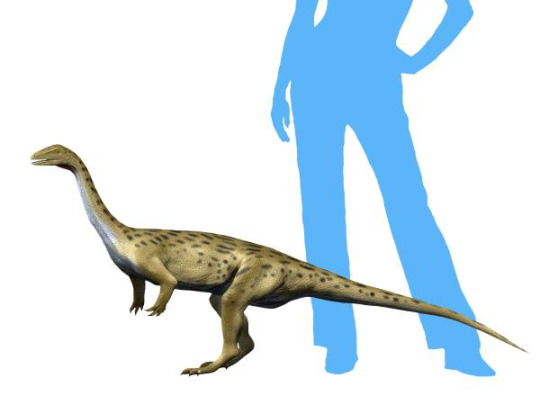
By Nobu Tamura, CC BY-SA 4.0
Other: Was Saturnalia a theropod or a prosauropod? The jury is still out. Its back half looks much like that of a theropod, but its head? Similar to prosauropods. The most recent analysis has it as a sauropodomorph - probably - but people still debate, and arguments continue to go on. It is often considered a part of a bigger group of dinosaurs including animals like Guaibasaurus, but some of these animals in recent studies have been found as prosauropods, and some as theropods, breaking up the group. So, the scientists continue to debate, and the exact nature of Saturnalia remains a mystery - but, for now, we can probably still call it a Sauropodomorph, along with Pampadromaeus.
~ By Meig Dickson
Sources Under the Cut
Abdala, F., & A. M. Ribeiro (2003). "A new traversodontid cynodont from the Santa Maria Formation (Ladinian-Carnian) of southern Brazil, with a phylogenetic analysis of Gondwanan traversodontids". Zoological Journal of the Linnean Society. 139 (4): 529–545.
Apaldetti, C., R. N. Martinez, O. A. Alcober and D. Pol. 2011. A new basal sauropodomorph (Dinosauria: Saurischia) from Quebrada del Barro Formation (Marayes-El Carrizal Basin), Northwestern Argentina. PLoS ONE 6(11):e26964:1-19
Aurélio, M., G. França; Jorge Ferigolo; Max C. Langer (2011). "Associated skeletons of a new middle Triassic "Rauisuchia" from Brazil". Naturwissenschaften. 98 (5): 389–395.
Barberena, MC (1978). "A huge tecodont skull from the Triassic of Brazil". Pesquisas Em Geociências. 9 (9): 62–75.
Bonaparte, J.F.; Ferigolo, J.; Ribeiro, A.M. (1999). "A new early Late Triassic saurischian dinosaur from Rio Grandedo Sul State, Brazil." Proceedings of the second Gondwanan Dinosaurs symposium". National Science Museum Monographs, Tokyo. 15: 89–109.
Bonaparte, J.F.; Brea, G.; Schultz, C.L.; Martinelli, A.G. (2007). "A new specimen of Guaibasaurus candelariensis (basal Saurischia) from the Late Triassic Caturrita Formation of southern Brazil". Historical Biology. 19 (1): 73–82.
Brea, G., J. F. Bonaparte, C. L. Schultz and A. G. Martinelli. 2005. A new specimen of Guaibasaurus candelariensis (basal Saurischia) from the Late Triassic Caturrita Formation of southern Brazil. In A. W. A.
Cabreira, Sergio F.; Cesar L. Schultz; Jonathas S. Bittencourt; Marina B. Soares; Daniel C. Fortier; Lúcio R. Silva; Max C. Langer (2011). "New stem-sauropodomorph (Dinosauria, Saurischia) from the Triassic of Brazil". Naturwissenschaften. 98 (12): 1035–1040.
Cabreira, S.F.; Kellner, A.W.A.; Dias-da-Silva, S.; da Silva, L.R.; Bronzati, M.; de Almeida Marsola, J.C.; Müller, R.T.; de Souza Bittencourt, J.; Batista, B.J.; Raugust, T.; Carrilho, R.; Brodt, A.; Langer, M.C. (2016). "A Unique Late Triassic Dinosauromorph Assemblage Reveals Dinosaur Ancestral Anatomy and Diet". Current Biology. 26: 3090–3095.
Colbert, EH (1970). "A saurischian dinosaur from the Triassic of Brazil". American Museum Novitates. 2045: 1–39.
Da-Rosa, Átila A. S. (2015-08-01). "Geological context of the dinosauriform-bearing outcrops from the Triassic of Southern Brazil". Journal of South American Earth Sciences. 61: 108–119.
Da-Rosa, Átila Augusto Stock; Paes-Neto, Voltaire Dutra; Schultz, Cesar Leandro; Desojo, Julia Brenda; Brust, Ana Carolina Biacchi (2018-08-15). "Osteology of the first skull of Aetosauroides scagliai Casamiquela 1960 (Archosauria: Aetosauria) from the Upper Triassic of southern Brazil (Hyperodapedon Assemblage Zone) and its phylogenetic importance". PLOS ONE. 13 (8): e0201450.
De Oliveira, T. V., Cesar Leandro Schultz, Marina Bento Soares and Carlos Nunes Rodrigues (2011). "A new carnivorous cynodont (Synapsida, Therapsida) from the Brazilian Middle Triassic (Santa Maria Formation): Candelariodon barberenai gen. et sp. nov". Zootaxa. 3027: 19–28.
Delsate, D., and M. D. Ezcurra. 2014. The first Early Jurassic (late Hettangian) theropod dinosaur remains from the Grand Duchy of Luxembourg. Geological Belgica 17(2):175-181
Desojo, J. B., Martin D. Ezcurra and Edio E. Kischlat (2012). "A new aetosaur genus (Archosauria: Pseudosuchia) from the early Late Triassic of southern Brazil" (PDF). Zootaxa. 3166: 1–33. ISSN 1175-5334
Desojo, Julia B.; Trotteyn, M. Jimena; Hechenleitner, E. Martín; Taborda, Jeremías R. A.; Miguel Ezpeleta; von Baczko, M. Belén; Rocher, Sebastián; Martinelli, Agustín G.; Fiorelli, Lucas E. (October 2017). "Deep faunistic turnovers preceded the rise of dinosaurs in southwestern Pangaea". Nature Ecology & Evolution. 1 (10): 1477–1483.
Dias-Da-Silva, Sérgio; Müller, Rodrigo T.; Garcia, Maurício S. (2019-07-04). "On the taxonomic status of Teyuwasu barberenai Kischlat, 1999 (Archosauria: Dinosauriformes), a challenging taxon from the Upper Triassic of southern Brazil". Zootaxa. 4629 (1): 146–150.
Ezcurra, M. D. 2010. A new early dinosaur (Saurischia: Sauropodomorpha) from the Late Triassic of Argentina: a reassessment of dinosaur origin and phylogeny. Journal of Systematic Palaeontology 8:371-425
Ezcurra, MD (2012). "Comments on the Taxonomic Diversity andPaleobiogeography of the Earliest Known Dinosaur Assemblages (Late Carnian-Earliest Norian)". Historia Natural. 2.
Ezcurra, Martín D.; Desojo, Julia B.; Rauhut, Oliver W.M. (August 2015). "Redescription and Phylogenetic Relationships of the Proterochampsid Rhadinosuchus gracilis (Diapsida: Archosauriformes) from the Early Late Triassic of Southern Brazil". Ameghiniana. 52 (4): 391–417.
Flávio A. Pretto; Max C. Langer; Cesar L. Schultz (2018). "A new dinosaur (Saurischia: Sauropodomorpha) from the Late Triassic of Brazil provides insights on the evolution of sauropodomorph body plan". Zoological Journal of the Linnean Society. in press.
Galton, P. M., and P. Upchurch. 2004. Prosauropoda. In D. B. Weishampel, P. Dodson, and H. Osmolska (eds.), The Dinosauria (second edition). University of California Press, Berkeley 232-258
Galton, P. M. 2007. Notes on the remains of archosaurian reptiles, mostly basal sauropodomorph dinosaurs, from the 1834 fissure fill (Rhaetian, Upper Triassic) at Clifton in Bristol, southwest England. Revue de Paléobiologie 26(2):505-591
Galton, P. M., A. M. Yates, and D. M. Kermack. 2007. Pantydraco n. gen. for Thecodontosaurus caducus Yates, 2003, a basal sauropodomorph dinosaur from the Upper Triassic or Lower Jurassic of South Wales, UK. Neues Jahrbuch für Geologie und Paläontologie Abhandlungen 243(1):119-125
Griffin, C. T., and S. J. Nesbitt. 2016. The femoral ontogeny and long bone histology of the Middle Triassic (?late Anisian) dinosauriform Asilisaurus kongwe and implications for the growth of early dinosaurs. Journal of Vertebrate Paleontology 36(3):e1111224:1-22
Gower, D. J. (2000). "Rauisuchian archosaurs (Reptilia:Diapsida): An overview" (PDF). Neues Jahrbuch für Geologie und Paläontologie, Abhandlungen. 218 (3): 447–488
Harris, S. K., A. B. Heckert, S. G. Lucas and A. P. Hunt. 2002. The oldest North American prosauropod, from the Upper Triassic Tecovas Formation of the Chinle Group (Adamanian: latest Carnian), west Texas. In A. B. Heckert & S. G. Lucas (eds.), Upper Triassic Stratigraphy and Paleontology. New Mexico Museum of Natural History and Science Bulletin 21:249-252
Horn, B. L. D.; Melo, T. M.; Schultz, C. L.; Philipp, R. P.; Kloss, H. P.; Goldberg, K. (2014-11-01). "A new third-order sequence stratigraphic framework applied to the Triassic of the Paraná Basin, Rio Grande do Sul, Brazil, based on structural, stratigraphic and paleontological data". Journal of South American Earth Sciences. 55: 123–132.
Irmis, R. B., and F. Knoll. 2008. New ornithischian dinosaur material from the Lower Jurassic Lufeng Formation of China. Neues Jahrbuch für Geologie und Paläontologie Abhandlungen 247(1):117-128
Kellner, D. D. R. Henriques, and T. Rodrigues (eds.), II Congresso Latino-Americano de Paleontologia de Vertebrados, Boletim de Resumos. Museum Nacional/UFRJ, Rio de Janeiro 55-56
Kischlat, EE (1999). "A new dinosaurian "rescued" from the Brazilian Triassic: Teyuwasu barbarenai, new taxon". Paleontologia Em Destaque, Boletim Informativo da Sociedade Brasileira de Paleontologia. 14 (26): 58.
Lacerda, M. B.; Schultz, C. L.; Bertoni-Machado, C. (2015). "First 'Rauisuchian' archosaur (Pseudosuchia, Loricata) for the Middle Triassic Santacruzodon Assemblage Zone (Santa Maria Supersequence), Rio Grande do Sul State, Brazil". PLoS ONE. 10 (2): e0118563. PMC 4340915 Freely accessible.
Langer, M. C., F. Abdala, M. Richter and M. J. Benton. 1999. A sauropodomorph dinosaur from the Upper Triassic (Carnian) of southern Brazil. Comptes Rendus de l'Academie des Sciences, Paris: Sciences de la terre et des planètes 329:511-517
Langer, Max C.; Schultz, Cesar L. (October 2000). "A New Species Of The Late Triassic Rhynchosaur Hyperodapedon From The Santa Maria Formation Of South Brazil". Palaeontology. 43 (4): 633–652.
Langer, M. C. 2003. The pelvic and hind limb anatomy of the stem-sauropodomorph Saturnalia tupiniquim (Late Triassic, Brazil). PaleoBios 23(2):1-40
Langer, M. C. 2004. Basal Saurischia. In D. B. Weishampel, P. Dodson, and H. Osmolska (eds.), The Dinosauria (second edition). University of California Press, Berkeley 25-46
Langer, M. C. 2005. Saturnalia tupiniquim and the origin of sauropodomorphs. Journal of Vertebrate Paleontology 25(3, suppl.):82A
Langer, M. C., and M. J. Benton. 2006. Early dinosaurs: a phylogenetic study. Journal of Systematic Palaeontology 4(4):309-358
Langer, MC; Schultz, CL (2007). "The continental tetrapod-bearing Triassic of South Brazil". New Mexico Museum of Natural History and Science Bulletin. 41: 201–218.
Langer, M. C., M. D. Ezcurra, J. S. Bittencourt and F. E. Novas. 2010. The origin and early evolution of dinosaurs. Biological Reviews 85:55-110
Langer, Max Cardoso; Brodt, André; Carrilho, Rodrigo; Raugust, Tiago; Batista, Brunna Jul’Armando; Bittencourt, Jonathas de Souza; Müller, Rodrigo Temp; Marsola, Júlio Cesar de Almeida; Bronzati, Mario (2016-11-21). "A Unique Late Triassic Dinosauromorph Assemblage Reveals Dinosaur Ancestral Anatomy and Diet". Current Biology. 26 (22): 3090–3095.
Langer, M.C.; Ramezani, J.; Da Rosa, Á.A.S. (2018). "U-Pb age constraints on dinosaur rise from south Brazil". Gondwana Research. X (18): 133–140.
Langer MC, McPhee BW, Marsola JCdA, Roberto-da-Silva L, Cabreira SF (2019) Anatomy of the dinosaur Pampadromaeus barberenai (Saurischia—Sauropodomorpha) from the Late Triassic Santa Maria Formation of southern Brazil. PLoS ONE 14(2): e0212543.
Lautenschlager, Stephan; Rauhut, Oliver W. M. (January 2015). "Osteology of Rauisuchus tiradentes from the Late Triassic (Carnian) Santa Maria Formation of Brazil, and its implications for rauisuchid anatomy and phylogeny: Osteology of Rauisuchus Tiradentes". Zoological Journal of the Linnean Society. 173 (1): 55–91.
Leal, L. A., and S. A. K. Azevedo. 2003. A preliminary Prosauropoda phylogeny with comments on Brazilian basal Sauropodomorpha. Journal of Vertebrate Paleontology 23(3, suppl.):71A
Liu, J. (2007). "The taxonomy of the traversodontid cynodonts Exaeretodon and Ischignathus" (PDF). Revista Brasileira de Paleontologia. 10 (2): 133–136.
Marsola, Júlio C. A.; Bittencourt, Jonathas S.; Butler, Richard J.; Da Rosa, Átila A. S.; Sayão, Juliana M.; Langer, Max C. (2018-09-03). "A new dinosaur with theropod affinities from the Late Triassic Santa Maria Formation, south Brazil". Journal of Vertebrate Paleontology. 38 (5): e1531878.
Martínez, R. N., and O. A. Alcober. 2009. A basal sauropodomorph (Dinosauria: Saurischia) from the Ischigualasto Formation (Triassic, Carnian) and the early evolution of Sauropodomorpha. PLoS ONE 4(2 (e4397)):1-12
Martinez, R. N.; Sereno, P. C.; Alcober, O. A.; Colombi, C. E.; Renne, P. R.; Montanez, I. P.; Currie, B. S. (2011-01-14). "A Basal Dinosaur from the Dawn of the Dinosaur Era in Southwestern Pangaea". Science. 331 (6014): 206–210.
Martínez, Ricardo N.; Apaldetti, Cecilia; Alcober, Oscar A.; Colombi, Carina E.; Sereno, Paul C.; Fernandez, Eliana; Malnis, Paula Santi; Correa, Gustavo A.; Abelin, Diego (November 2012). "Vertebrate succession in the Ischigualasto Formation". Journal of Vertebrate Paleontology. 32 (sup1): 10–30.
Mastrantonio, Bianca; von Baczko, María; Desojo, Julia; Schultz, Cesar (2019). "The skull anatomy and cranial endocast of Prestosuchus chiniquensis (Archosauria: Pseudosuchia) from Brazil". Acta Palaeontologica Polonica. 64.
Mattar, L.C.B. 1987. Descrição osteólogica do crânio e segunda vértebrata cervical de Barberenasuchus brasiliensis Mattar, 1987 (Reptilia, Thecodontia) do Mesotriássico do Rio Grande do Sul, Brasil. Anais, Academia Brasileira de Ciências, 61: 319–333
Maurício S. Garcia; Rodrigo T. Müller; Átila A.S. Da-Rosa; Sérgio Dias-da-Silva (2019). "The oldest known co-occurrence of dinosaurs and their closest relatives: A new lagerpetid from a Carnian (Upper Triassic) bed of Brazil with implications for dinosauromorph biostratigraphy, early diversification and biogeography". Journal of South American Earth Sciences. 91: 302–319.
McPhee, B. W., J. N. Choiniere, A. M. Yates and P. A. Viglietti. 2015. A second species of Eucnemesaurus Van Hoepen, 1920 (Dinosauria, Sauropodomorpha): new information on the diversity and evolution of the sauropodomorph fauna of South Africa's lower Elliot Formation (latest Triassic). Journal of Vertebrate Paleontology 35(5):e980504:1-24
Moser, M., U. B. Mathur, F. T. Fürsich, D. K. Pandey, and N. Mathur. 2006. Oldest camarasauromorph sauropod (Dinosauria) discovered in the Middle Jurassic (Bajocian) of the Khadir Island, Kachchh, western India. Paläontologische Zeitschrift 80(1):34-51
Müller, Rodrigo T; Langer, Max C; Bronzati, Mario; Pacheco, Cristian P; Cabreira, Sérgio F; Dias-Da-Silva, Sérgio (2018-05-15). "Early evolution of sauropodomorphs: anatomy and phylogenetic relationships of a remarkably well-preserved dinosaur from the Upper Triassic of southern Brazil". Zoological Journal of the Linnean Society.
Müller, Rodrigo T.; Garcia, Maurício S. (2019-03-08). "Rise of an empire: analysing the high diversity of the earliest sauropodomorph dinosaurs through distinct hypotheses". Historical Biology: 1–6.
Nesbitt, S. J., and M. D. Ezcurra. 2015. The early fossil record of dinosaurs in North America: A new neotheropod from the base of the Upper Triassic Dockum Group of Texas. Acta Palaeontologica Polonica 60(3):513-526
Nesbitt, Sterling J.; Butler, Richard J.; Ezcurra, Martín D.; Barrett, Paul M.; Stocker, Michelle R.; Angielczyk, Kenneth D.; Smith, Roger M. H.; Sidor, Christian A.; Niedźwiedzki, Grzegorz (April 2017). "The earliest bird-line archosaurs and the assembly of the dinosaur body plan". Nature. 544 (7651): 484–487.
Novas, F. E., M. D. Ezcurra, S. Chatterjee and T. S. Kutty. 2011. New dinosaur species from the Upper Triassic Upper Maleri and Lower Dharmaram formations of Central India. Earth and Environmental Science Transactions of the Royal Society of Edinburgh 101:333-349
Oliveira, T.V.; Soares, M.B.; Schultz, C.L. (2010). "Trucidocynodon riograndensis gen. nov. et sp. nov. (Eucynodontia), a new cynodont from the Brazilian Upper Triassic (Santa Maria Formation)". Zootaxa. 2382: 1–71.
Otero, A., and D. Pol. 2013. Postcranial anatomy and phylogenetic relationships of Mussaurus patagonicus (Dinosauria, Sauropodomorpha). Journal of Vertebrate Paleontology 33(5):1138-1168
Philipp, Ruy P.; Schultz, Cesar L.; Kloss, Heiny P.; Horn, Bruno L.D.; Soares, Marina B.; Basei, Miguel A.S. (December 2018). "Middle Triassic SW Gondwana paleogeography and sedimentary dispersal revealed by integration of stratigraphy and U-Pb zircon analysis: The Santa Cruz Sequence, Paraná Basin, Brazil". Journal of South American Earth Sciences. 88: 216–237.
Raath, M. A., P. M. Oesterlen, and J. W. Kitching. 1992. First record of Triassic Rhynchosauria (Reptilia: Diapsida) from the Lower Zambezi Valley, Zimbabwe. Palaeontologia africana 29:1-10
Raugust, Tiago, Marcel Lacerda & Cesar Leandro Schultz (in press). "The first occurrence of Chanaresuchus bonapartei Romer 1971 (Archosauriformes, Proterochampsia) of the Middle Triassic of Brazil from the Santacruzodon Assemblage Zone, Santa Maria Formation (Paraná Basin)". In S.J. Nesbitt; J.B. Desojo & R.B. Irmis (eds.). Anatomy, phylogeny and palaeobiology of early archosaurs and their kin. The Geological Society of London.
Rauhut, O. W. M. 2003. The interrelationships and evolution of basal theropod dinosaurs. Special Papers in Palaeontology 69:1-213
Reichel, Míriam, Schultz , Cesar Leandro, & Soares , Marina Bento 2009 “A New Traversodontid Cynodont (Therapsida, Eucynodontia) from the Middle Triassic Santa Maria Formation of Rio Grande do Sul, Brazil” Palaeontology 52(1):229-250
Roberto-da-Silva, L., Julia B. Desojo, Sérgio F. Cabreira, Alex S. S. Aires, Rodrigo T. Müller, Cristian P. Pacheco and Sérgio Dias-da-Silva (2014). "A new aetosaur from the Upper Triassic of the Santa Maria Formation, southern Brazil". Zootaxa. 3764 (3): 240–278.
Roberto-Da-Silva, Lúcio; Müller, Rodrigo Temp; França, Marco Aurélio Gallo de; Cabreira, Sérgio Furtado; Dias-Da-Silva, Sérgio (2018-12-24). "An impressive skeleton of the giant top predator Prestosuchus chiniquensis (Pseudosuchia: Loricata) from the Triassic of Southern Brazil, with phylogenetic remarks". Historical Biology: 1–20.
Romer, A. S. The Brazilian cynodont reptiles Belesodon and Chiniquodon. Breviora, 1969a, 332, 1–16.
Schultz, Cesar Leandro; Max Cardoso Langer & Felipe Chinaglia Montefeltro (2016). "A new rhynchosaur from south Brazil (Santa Maria Formation) and rhynchosaur diversity patterns across the Middle-Late Triassic boundary". Paläontologische Zeitschrift. in press. doi:10.1007/s12542-016-0307-7
Schultz, Cesar L.; de França, Marco A. G.; Lacerda, Marcel B. (2018-10-20). "A new erpetosuchid (Pseudosuchia, Archosauria) from the Middle–Late Triassic of Southern Brazil". Zoological Journal of the Linnean Society. 184 (3): 804–824.
Smith, N. D., and D. Pol. 2007. Anatomy of a basal sauropodomorph dinosaur from the Early Jurassic Hanson Formation of Antarctica. Acta Palaeontologica Polonica 52(4):657-674
Thulborn, T. 2006. On the tracks of the earliest dinosaurs: implications for the hypothesis of dinosaurian monophyly. Alcheringa 30:273-311
Upchurch, P., P. M. Barrett, and P. M. Galton. 2007. A phylogenetic analysis of basal sauropodomorph relationships: implications for the origin of sauropod dinosaurs. In P. M. Barrett, D. J. Batten (eds.), Evolution and Palaeobiology of Early Sauropodomorph Dinosaurs, Special Papers in Palaeontology 77:57-90
Weishampel, David B; et al (2004). "Dinosaur distribution (Late Triassic, South America)." In: Weishampel, David B.; Dodson, Peter; and Osmólska, Halszka (eds.): The Dinosauria, 2nd, Berkeley: University of California Press. Pp. 527–528.
Yates, A. M. 2003. The species taxonomy of the sauropodomorph dinosaurs from the Löwenstein Formation (Norian, Late Triassic) of Germany. Palaeontology 46(2):317-337
Zerfass, Henrique; Lavina, Ernesto Luiz; Schultz, Cesar Leandro; Garcia, Antônio Jorge Vasconcellos; Faccini, Ubiratan Ferrucio; Chemale, Farid (2003-09-01). "Sequence stratigraphy of continental Triassic strata of Southernmost Brazil: a contribution to Southwestern Gondwana palaeogeography and palaeoclimate". Sedimentary Geology. 161 (1): 85–105.
#Saturnalia tupiniquim#Saturnalia#Prosauropod#Dinosaur#Sauropodomorph#Factfile#Dinosaurs#Triassic#south america#Mesozoic Monday#Omnivore
254 notes
·
View notes
Text
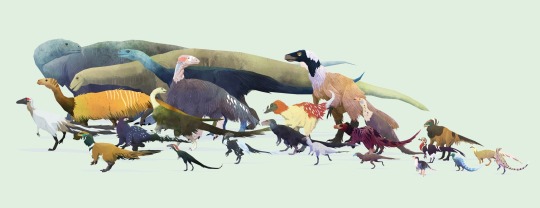
And now, time for an all dinosaurian Triassic fauna. From left to right: Coelophysis bauri, Blikanasaurus cromptoni, Ingentia prima, Lessemsaurus sauropoides, Unaysaurus tolentinoi, Chindesaurus bryansmalli, Efraasia minor, Coloradisaurus brevis, Camposaurus arizonensis, Eucnemesaurus fortis, Guaibasaurus candelariensis, Gnathovorax cabreirai, Sanjuansaurus gordilloi, Pampadromaeus barberenai, Herrerasaurus ischigualastensis, Staurikosaurus pricei, Eodromaeus murphi, Bagualosaurus agudoensis, Alwalkeria maleriensis, Panphagia protos, Chromogisaurus novasi, Eoraptor lunensis, Saturnalia tupiniquim and Buriolestes schultzi.
#palaeoblr#palaeontology#paleontology#paleoart#illustration#dinosaur#triassic#palaeoart#animals#mesozoic#dinosauria#dinosaurs
132 notes
·
View notes
Text
Guinness reconhece que dinossauros mais antigos do mundo foram encontrados no RS
Guinness reconhece que dinossauros mais antigos do mundo foram encontrados no RS
Estudos apontam que rochas contendo fósseis datam de até 233,2 milhões de anos atrás, período correspondente à idade ladiniana do final do período Triássico. Saturnalia tupiniquim, dinossauro que viveu no Brasil há 230 milhões de anos Reprodução/EPTV O Guinness World Records reconheceu, na quinta-feira (5), que os dinossauros mais antigos do mundo podem ter habitado a área que atualmente…

View On WordPress
0 notes
Text
Guinness reconhece que dinossauros mais antigos do mundo foram encontrados no RS
Guinness reconhece que dinossauros mais antigos do mundo foram encontrados no RS
Estudos apontam que rochas contendo fósseis datam de até 233,2 milhões de anos atrás, período correspondente à idade ladiniana do final do período Triássico. Saturnalia tupiniquim, dinossauro que viveu no Brasil há 230 milhões de anos Reprodução/EPTV O Guinness World Records reconheceu, na quinta-feira (5), que os dinossauros mais antigos do mundo podem ter habitado a área que atualmente…

View On WordPress
0 notes
Text
Guinness reconhece que dinossauros mais antigos do mundo foram encontrados no RS
Guinness reconhece que dinossauros mais antigos do mundo foram encontrados no RS
Estudos apontam que rochas contendo fósseis datam de até 233,2 milhões de anos atrás, período correspondente à idade ladiniana do final do período Triássico. Saturnalia tupiniquim, dinossauro que viveu no Brasil há 230 milhões de anos Reprodução/EPTV O Guinness World Records reconheceu, na quinta-feira (5), que os dinossauros mais antigos do mundo podem ter habitado a área que atualmente…

View On WordPress
0 notes
Link
O Saturnalia tupiniquim, espécie de dinossauro descoberta no Brasil, é um dos animais mais primitivos do mundo e tem sido investigado por pesquisadores brasileiros, que agora reconstituíram seu cérebro e revelaram detalhes importantes sobre seu comportamento. Esta foi a primeira vez que partes do cérebro de um dinossauro tão antigo foram reconstruídas. • Recém nomeado Titanossauro foi o maior animal terrestre que o nosso planeta já viu • Garoto de 10 anos corrige erro sobre dinossauros no Museu
via: http://eexponews.com/pesquisadores-brasileiros-reconstituem-crebro-de-dinossauro-de-230-milhes-de-anos_5701666362359808
0 notes
Text

Archovember is here once again! Looooots of theropods this year. Also a lot more dinosaurs in general than other archosaurs. Sorry. There were just too many I wanted to add!
I also apologize that there are several redraws in this list… I included a couple animals I’ve drawn for past Archovembers that I wasn’t quite happy with (7 to be exact, oop). If you’ve been drawing along since the beginning and don’t feel like drawing a repeat, feel free to substitute a related species!
For new folks: this is my “Draw Dinovember” list that I expanded out to include other archosauriforms. I started doing this a few years ago to challenge myself to draw species I’ve never drawn before and/or ones that don’t get a lot of attention. Feel free to join in! You can do the whole list, just the dinosaurs (the names in green), just the pterosaurs (orange), just the pseudosuchians (blue), just the 3 oddballs (red), just your favorites, just ones you’ve never drawn before, pick one blindly, roll a D20 and a D10 and draw the sum of whichever numbers you get, etc. Just make sure they’re posted on or after their specific day! You can use #Archovember or #Archovember2024, as those are the tags I follow. Be as detailed or as sketchy as you’d like! I’ll be leaving the story highlights on my Instagram (also SaritaPaleo) from last year’s Archovember up until November 1st, if you’d like to see what people have done in the past! (This challenge usually gets a lot more traction on Instagram; so I would recommend checking it out there if you have one!)
As a disclaimer that I am obligated to give every year: when you are looking for refs for some of these species you will come across David Peters. This guy posts a lot of pseudoscientific images featuring lesser-known species, and his stuff can sometimes dominate search results. Do not trust anything from sites called “Reptile Evolution” or “The Pterosaur Heresies.” Peters’ constant outpouring of material has a habit of clogging up search results, misleading and tripping up people who may be trying to get into paleoart. He fooled me when I was first starting out! If you’re drawing along and are having trouble finding legit references, send me a message and I can send you what I’m using!
Anyway, here is the list in case the above graphic can’t be read:
1. Your Choice!
2. Other - Protorosaurus speneri
3. Dinosaur - Gorgosaurus libratus
4. Pterosaur - Preondactylus buffarinii
5. Dinosaur - Gargoyleosaurus parkpinorum
6. Pseudosuchian - Razanandrongobe sakalavae
7. Dinosaur - Vespersaurus paranaensis
8. Other - Euparkeria capensis
9. Dinosaur - Spiclypeus shipporum
10. Pterosaur - Arambourgiania philadelphiae
11. Dinosaur - Tsintaosaurus spinorhinus
12. Pseudosuchian - Armadillosuchus arrudai
13. Dinosaur - Shingopana songwensis
14. Pterosaur - Cuspicephalus scarfi
15. Dinosaur - Saturnalia tupiniquim
16. Pterosaur - Caelestiventus hanseni
17. Dinosaur - Koreaceratops hwaseongensis
18. Pseudosuchian - Lotosaurus adentus
19. Dinosaur - Pelagornis sandersi
20. Pterosaur - Anurognathus ammoni
21. Dinosaur - Jakapil kaniukura
22. Pseudosuchian - Purussaurus brasiliensis
23. Dinosaur - Ledumahadi mafube
24. Pseudosuchian - Sillosuchus longicervix
25. Pterosaur - Pteranodon longiceps
26. Dinosaur - Compsognathus longipes
27. Other - Tanystropheus longobardicus
28. Pseudosuchian - Eurycephalosuchus gannanensis
29. Pterosaur - Campylognathoides zitteli
30. Dinosaur - Iguanodon bernissartensis
67 notes
·
View notes
Photo








More improved versions of older illustrations.. From top to bottom (left to right): Panphagia protos, Eoraptor lunensis, Guaibasaurus candelariensis, Eucnemesaurus fortis, Alwalkeria maleriensis, Sanjuansaurus gordilloi, Saturnalia tupiniquim and Unaysaurus tolentinoi.
For prints, check: https://www.stavrosillustration.se
187 notes
·
View notes
Photo
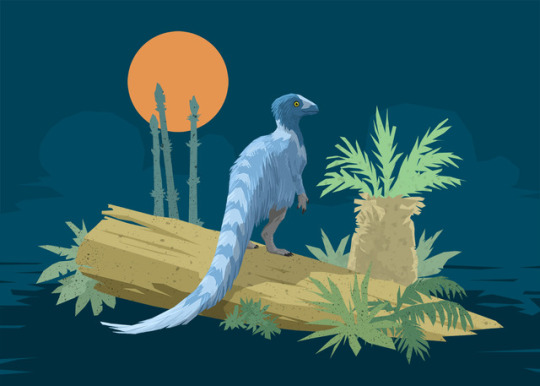
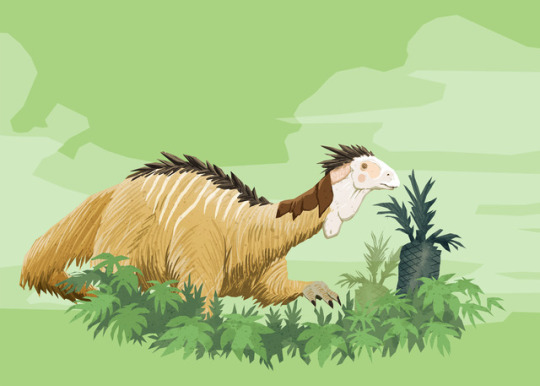



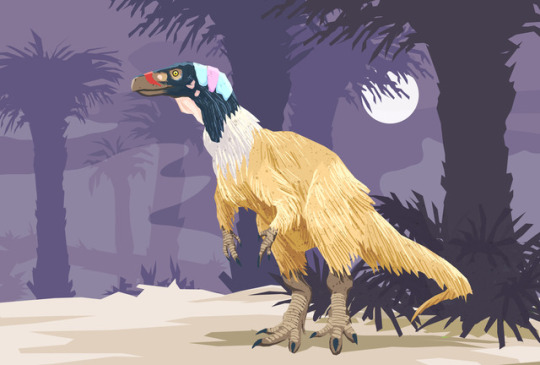
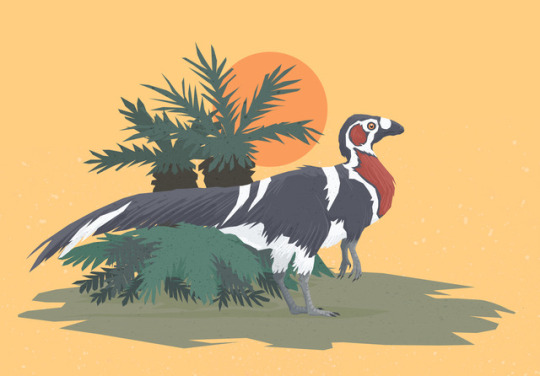

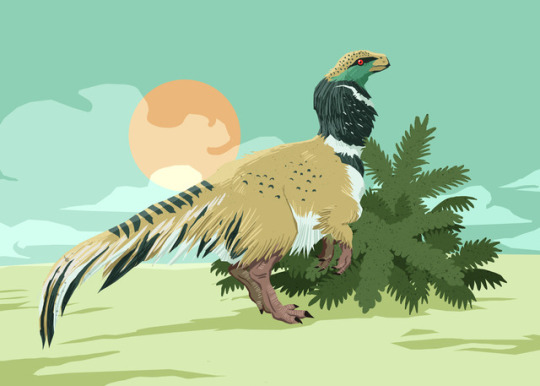
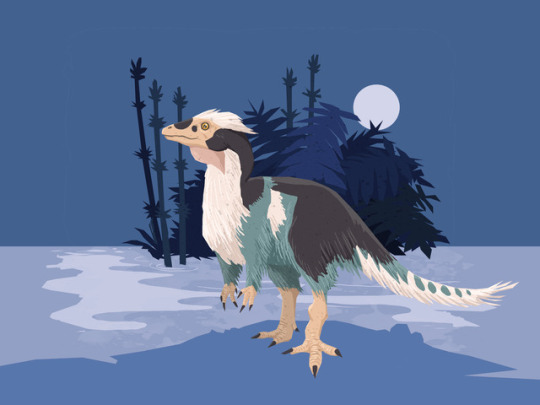
TRIASSIC FANTASTIC!
Carnian (and possibly Norian) dinosaurs feathered and in full color!
From top to bottom (left to right): Eoraptor lunensis, Blikanasaurus cromptoni, Eucnemesaurus fortis, Pisanosaurus mertii, Saturnalia tupiniquim, Herrerasaurus ischigualastensis, Panphagia protos, Guaibasaurus candelariensis, Unaysaurus tolentinoi and Alwalkeria maleriensis.
If you like these, check also out my prints here: https://www.stavrosillustration.se
934 notes
·
View notes